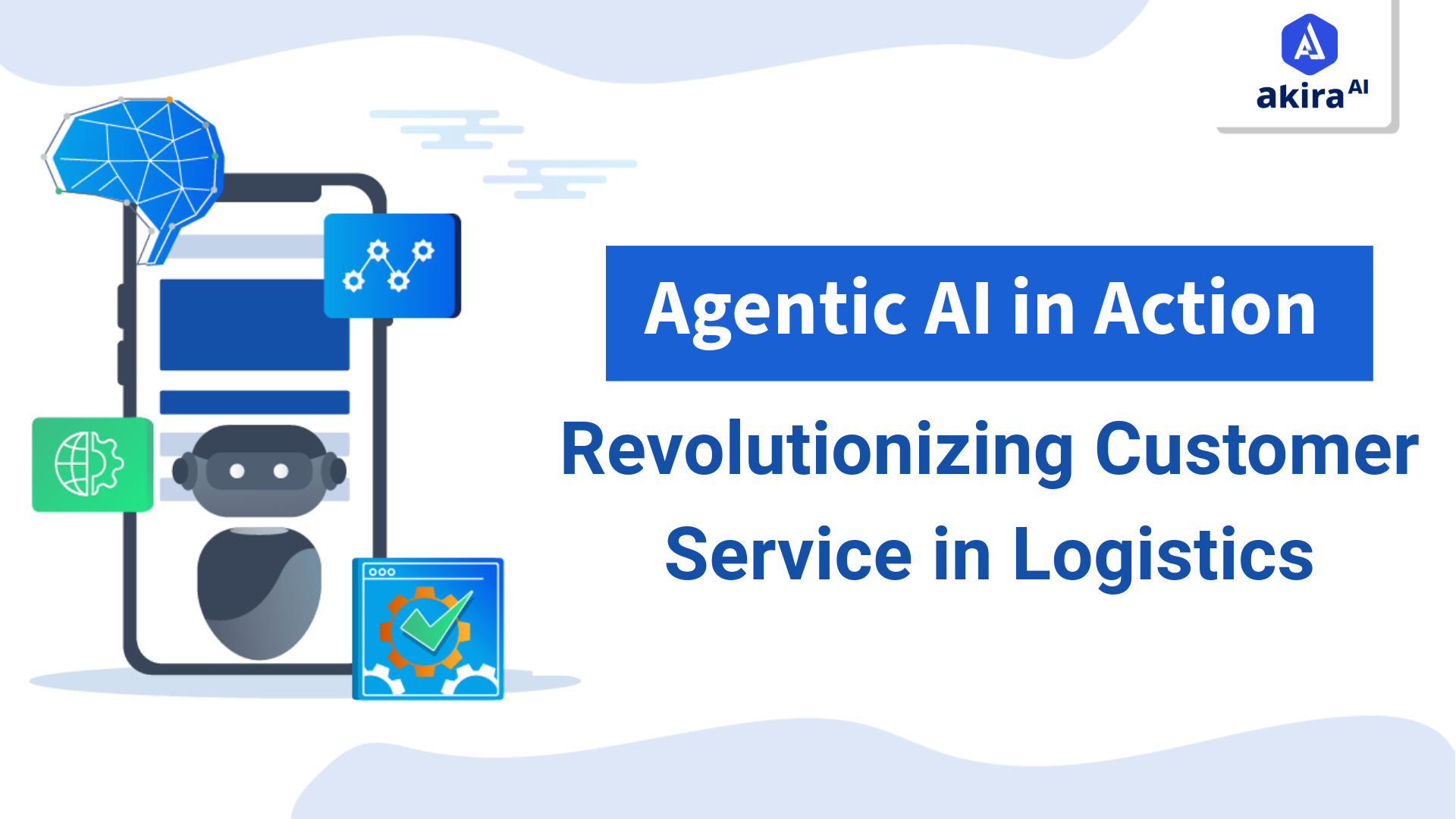Key Insights
Agentic AI transforms warehouse space optimization by automating layouts, improving space utilization, and boosting operational efficiency. AI agents dynamically slot products, streamline workflows, and reduce downtime through predictive maintenance. Real-time inventory management ensures warehouses remain agile and responsive to demand changes. This results in faster operations and better resource use.

Logistics companies dealing with warehousing challenges acknowledge that the efficiency of space is a major constraint they deal with in their warehouses. Several of them pose issues of poor design, which results in the stock being stored in densely packed areas, which hinders fast access. Stockouts and overstock situations occur due to changes in demand fluctuations that result in situations such as wasted space and increased holding costs. Moreover, other conventional approaches to handling inventory also have their shortcomings when it comes to real-time data, making the issue even worse.
Given these challenges, how can businesses effectively enhance their warehouse operations? The answer lies in the integration of AI agents. These intelligent systems provide data-driven insights and automation to streamline processes, optimize layouts, and enhance efficiency. These techniques can help companies manage warehouse space effectively to satisfy customers and enhance operational efficiency where every space is useful.
What is Warehouse Space Optimization?
Warehouse space optimization refers to the act of rationing out storage space available in the warehouse using the most efficient methods possible. This involves factors such as designing the space, stocking, and the pattern of movement in and out of the store to utilize each square inch of floor space. Optimization reduces empty or unused space, improves the general efficiency of logistics, and shortens cycle time for order completion, reducing the cost of operations.
Effective warehouse space optimization can be achieved through various techniques. For example, dynamic slotting makes it possible to relocate items depending on their demand in the business to ensure that products demanded often are placed in easy-to-access places. Moreover, knowledge of the flow of goods and their dependencies between them within the warehouse is necessary for analyzing the specific weaknesses in the flow. They help in the optimization of space and play a part in improving supply chain response and outcome.
A Brief Overview of Warehouse Space Optimization
Warehousing space shall be considered a key factor in logistics management since it impacts, first and foremost, the amount and efficiency of work, the total cost of operations, and service reliability. This process makes it possible for firms to stock more products than they should, leading them to construct new structures, thus implying high rates of return on investment. Techniques such as dynamic slotting, where products are placed based on demand patterns, contribute to improved efficiency. Additionally, automated storage and retrieval systems enhance optimization by ensuring that items are stored and retrieved most efficiently.
AI agents in warehouse space optimization play a transformative role by automating and enhancing these processes. By utilizing machine learning algorithms and predictive analytics, AI agents can analyze vast datasets to determine the optimal arrangement of products and workflows. These autonomous agents continuously adapt to changes in inventory and demand, ensuring that space is utilized effectively. They facilitate real-time monitoring, which is imperative in maintaining the continued performance of organizations and managing variability in the market.
Traditional vs. Agentic AI Warehouse Space Optimization
|
Feature |
Traditional Warehouse Space Optimization |
Agentic AI Warehouse Space Optimization |
|
Data Analysis |
Manual analysis of inventory data |
Real-time analytics using agentic analytics |
|
Adaptability |
Static layouts with limited flexibility |
Dynamic layouts that adapt to demand changes |
|
Efficiency |
Time-consuming manual processes |
Automated processes that save time and resources |
|
Space Utilization |
Basic space allocation strategies |
Advanced multi-agent systems optimizing space |
|
Inventory Management |
Manual tracking of stock |
Automated inventory management for accuracy |
How Do AI Agents Facilitate Warehouse Space Optimization?
AI agents help optimize warehouses and data handling, storage, and decision-making processes more easily. Here’s how they contribute to this process:
-
Data-Driven Insights: AI agents analyze historical data and trends to forecast demand, allowing for better inventory placement. By understanding patterns in sales and customer behavior, businesses can make informed decisions about where to store products for maximum efficiency.
-
Dynamic Slotting: These agents automate the allocation of storage locations based on product demand, ensuring high-traffic items are easily accessible. This greatly enables warehouses to respond to variations, which improves service levels to meet customer needs.
-
Workflow Automation: AI agents automate processes and movements and prevent the wastage of resources through lots of movement to complete tasks. Therefore, order picking and packing may be safely left to automation, freeing up personnel to perform other, more valuable functions.
-
Predictive Maintenance: They monitor equipment health and performance, predicting maintenance needs to avoid downtime. This proactive approach ensures that machinery is always operational, preventing costly interruptions in the workflow.
-
Real-Time Inventory Management: These agents provide real-time updates on inventory levels, enabling quick adjustments to storage layouts. This capability enables business organizations to meet consumers’ demands effectively because they can easily adapt quickly to the changes in demand, preventing occasions when businesses stock high inventories.
-
Enhanced Reporting and Analytics: AI agents create reports with a detailed assessment of the performance of the designated warehouses, along with suggestions about their space utilization and functionality. From this perspective, there are possibilities for businesses to improve continuously because it is possible to study the trends and problems.
How Akira AI Optimizes Warehouse Space Optimization?
Akira AI utilizes specialized agents to optimize warehouse space effectively, leveraging agentic AI principles to enhance operational efficiency. Each type of agent plays a critical role in ensuring that warehouses operate at peak performance while maximizing space utilization. It uses sophisticated technologies and algorithms to turn concept warehouse functions into efficient, digital-oriented activities.
-
Inventory Management Agents
These agents help to track and control the stocks in that they keep an optimal stock. They employ sale information to identify the appropriate time to order those goods and the locations in the warehouse to place them. By taking such a proactive approach, there are fewer cases of stock out and overstock.
It challenges the key determinants of space productivity and holding costs, respectively. With real-time monitoring, these agents make certain that the warehouses hold more efficient inventory flows, which, in the end, will improve overall performance.
-
Workflow Optimization Agents
Such agents identify the picking, packing, and shipping process to improve the efficiency of flow within a work area. They utilize sophisticated models to determine critical tasks in a workflow and recommend possible ways in which the tedious process might be made easier.
This optimization helps companies save a lot of time and also increases order-picking efficiency, meaning that pickup rates can increase significantly without the need for additional manpower. In turn, all these lead to improved customer satisfaction and timely, efficient utilization of warehouses through various efficient finished product flows.
-
Space Allocation Agents
These autonomous agents are employed to automatically assign the different products to the most suitable storage spaces depending on forecasting and product properties. Finally, in an attempt to optimize the time spent to access items within the warehouse, these agents analyze historical data to place frequently used items in easily accessible areas.
This placement makes functional organizations more efficient and enhances warehouse space optimization so that companies can stock more in the same space. These agents, therefore, make the change in the storage strategy in this respect as demands alter to accord maximum space.
-
Analytics Agents
These agents present specific recommendations regarding space occupation and total functional efficiency in a warehouse. They can, therefore, always see what needs to be changed or if there is a need for a change in layout to cause efficiency.
It identifies different metrics that help these agents monitor KPIs unveiled by the execution of WMS to assist the warehouse manager in deciding on efficient resource usage and modification in the business processes. The end product is an efficient warehouse that can use agentic analytics of the situation to enhance efficiency and space use.
Use Cases of AI Agents in Warehouse Space Optimization
 Fig 1: Use Cases of AI Agents in Warehouse Space Optimization
Fig 1: Use Cases of AI Agents in Warehouse Space Optimization
-
Dynamic Slotting: AI agents can adjust product placements based on real-time sales data. For example, if a specific product sees a spike in demand, they can automatically move it to a more accessible location within the warehouse to reduce picking time.
-
Automated Replenishment: These agents can trigger replenishment orders when stock levels fall below a specified threshold. This ensures that popular items are always available, reducing the risk of stockouts and missed sales opportunities.
-
Warehouse Layout Optimization: AI-based solutions analyze the flow of goods to create optimal layouts that minimize travel time. They optimize the layouts of products by analyzing how a product is transferred within a warehouse environment.
-
Energy Management: These autonomous agents can suggest ways in which energy consumption by warehouses can be reduced, especially in areas such as lighting and heating, depending on occupancy. Besides, they minimize the expenditure on energy and support ecological measures for sustainability.
-
Route Optimization for Picking: The multi-agent system works out the best ways of picking items from various points throughout the warehouse. Right routing decreases travel time and increases the efficiency of the whole picking activity.
-
Inventory Forecasting: These agents leverage historical sales data and market trends to predict future inventory needs. This allows warehouses to prepare for fluctuations in demand and adjust their inventory accordingly, preventing overstocking or stockouts.
Operational Benefits of AI Agents in Warehouse Space Optimization
Implementing AI agents in warehouse space optimization offers several operational benefits:
-
Increased Space Utilization: There is always an increased possibility of making the most out of the available space by planning layouts and inventory placements. For instance, increased effective use of vertical space can push current storage capacities much higher without calling for spatial enlargement.
-
Cost Savings: Eliminating the requirement for other storage facilities has a huge impact on cutting operating expenses. The easy optimization of space available can help organizations avoid expensive expansions or moving to another area.
-
Improved Accuracy: The use of automated systems reduces opportunities for errors in stock control and order processing in the warehouse. They ensure that customers get the right products in good time, which enhances customer satisfaction.
-
Enhanced Flexibility: AI agents remain ready to respond to shifts in market and demand conditions or make more facile responses. This is particularly important for business entities that are required to adapt to change mainly driven by customers’ demands or events occurring in the market environment.
-
Streamlined Operations: Workflow automation reduces manual tasks, freeing up staff for higher-value activities. Employees can focus on strategic initiatives rather than routine tasks, driving productivity.
-
Better Customer Satisfaction: Faster and more accurate order fulfillment improves customer experience and loyalty. Satisfied customers are more likely to return, contributing to long-term business success.
Technologies Transforming Warehouse Space Optimization
Several technologies underlie the effectiveness of AI agents in optimizing warehouse space:
-
Machine Learning: Algorithms analyze historical data to predict future trends and optimize inventory levels. By continually learning from new data, these algorithms become more accurate over time, enhancing decision-making.
-
Internet of Things (IoT): AI agents’ primary sources of information are IoT devices that continuously report current conditions within a warehouse. It creates a possibility of responding quickly to fluctuations in the inventory or some environmental conditions.
-
Robotic Process Automation (RPA): RPA automates repetitive tasks, allowing AI agents to focus on more complex decision-making. By taking over mundane tasks, RPA increases efficiency and reduces the potential for human error.
-
Cloud Computing: Cloud computing offers the scalability and storage that allow for the huge amount of data collected in warehouses. Cloud solutions mean that the information is available on the Internet, and it enables cooperation and timely decision-making.
-
Augmented Reality (AR): It can enhance warehouse operations by providing visual aids for picking and packing processes. Workers with AR devices can quickly identify product locations, improving efficiency and accuracy.
Future Trends in AI Agents for Warehouse Space Optimization
As technology continues to evolve, several trends are likely to shape the future of AI agents in warehouse space optimization:
-
Increased Adoption of Autonomous Robots: More warehouses will integrate autonomous robots for tasks like picking and packing. These robots can work alongside human workers, enhancing productivity and reducing labor costs.
-
Enhanced Predictive Analytics: AI agents will apply superior algorithms so as to enable them to come up with better forecasts. Better analytics shall help address issues such as demand volatility and, subsequently, distribution of stocks and space.
-
Integration with Blockchain: The autonomous agents will enhance transparency and security in supply chain transactions. Blockchain and AI can help companies trace products from the point of origin through to their delivery and provide accountability to decrease fraud.
-
Sustainability Initiatives: Autonomous agents will be critical in optimizing resource use, reducing waste, and promoting sustainability. Businesses will increasingly seek AI-driven solutions that align with their sustainability goals.
-
Personalized Customer Experiences: AI agents will make particular recommendations according to customers' preferences and actions. Organizations can improve service delivery and increase customer retention since the crew can identify every client’s needs.
-
Cross-Industry Applications: These agents will be applied not only in logistics; their use will extend to other industries to provoke breakthroughs in manufacturing, retail, and much more. The flows and juxtaposition of concepts will foster improvements in productivity within different areas of business.
Conclusion: AI Agent for Optimizing Warehouse Space
Optimizing warehouse space and utilization has a number of difficulties that affect warehouse operations and their profitability. When it comes to these challenges, companies can rely on Artificial Intelligence agents. A few of these smart systems include Automated storage and order picking, which optimizes inventory control, workflow, and storage throughout the warehouse. These solutions, such as Akira AI, enhance the current processes and create the basis for smarter logistics systems in the future. The role of AI in warehouse management will undoubtedly expand as technology progresses. Such an environment can be expected to produce yet more sophisticated agents that use complex analytics, learning facilities, and automation to refine logistics. Adopting these innovations will enhance business competitiveness in a world saturated with competition so as to be in a position to satisfy customers with enhanced business productivity and minimized consumption of resources.


